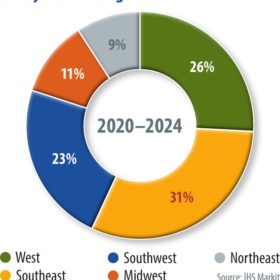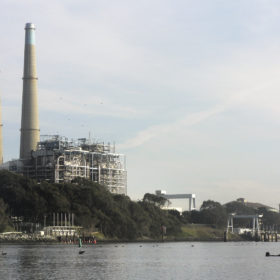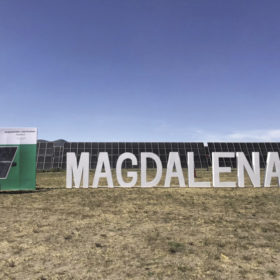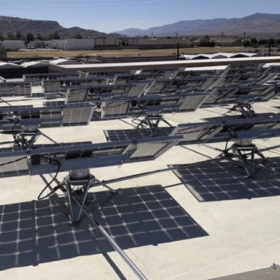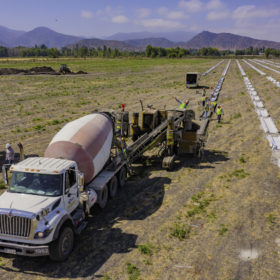Stepping up while fossils step out
This year has caused major economic shifts, the acceleration of some existing trends, and has left some industries staggering. In general, it has been encouraging to see the resilience exhibited by the solar industry in the face of a Covid-19-related economic downturn, although this hasn’t been even across all segments and markets.
Stocks rally on storage demand
With power outages in two U.S. states this month, many are looking to storage solutions to ensure reliable power supply. This, writes Jesse Pichel of Roth Capital Partners, could prove a short-term driver for storage stocks.
Hot summer – hotter fall?
From mid-July to early August, prices fell across the board – perhaps for the last time this year, given recent indications that the slide will soon come to an end. Most PV manufacturers have either announced price increases in the range of a few cents per watt for the fourth quarter, or have already released adjusted price lists. But anybody who thinks that they can still buy cheap modules in unlimited quantities for short-term delivery is in for a disappointment, writes Martin Schachinger of pvXchange.com. This year there has been no summer lull.
Texas will outshine California in 2020
The Covid-19 pandemic continues to cast a cloud on industries around the world, but the U.S. utility-scale solar segment is still growing, writes IHS Markit solar analyst Maria J. Chea. Around 3 GW of solar PV is set to be installed this year in Texas alone, but opportunities also abound across several other southern U.S. states.
Bigger and better: Technology
The SNEC 2020 PV Power Expo opened on Aug. 8 in Shanghai. Unlike previous editions, the world’s largest solar trade fair was mostly attended by Chinese participants this year due to the Covid-19 pandemic. While the trade fair used to offer insights into global market trends, volumes were low this year due to a buyer/seller standoff amid rising prices caused by the recent accidents at polysilicon plants in Xinjiang. Also, there was little change in technologies. PV InfoLink’s Corrine Lin offers insights into cells and modules at SNEC 2020.
Outcompeting fossil fuels in the energy transition
Energy markets are not exactly free markets, and the replacement of existing generation is not entirely tied to price. There are artificial regulatory constructs and financial structures built into energy markets which can favor certain parties (utilities) and fuels (legacy coal, gas, and nuclear).
Mexico headed for a solar slowdown
It has already been a complicated year in terms of private investments in Mexico’s energy sector. And for solar, a lack of policy certainty and a government supportive of the fossil fuels industry are serving to further muddy the waters for projects already in development, while putting the brakes on any new plans.
Solar shines in Canada’s oil patch
The quiet prairie landscape of Vulcan County, a rural stretch of southern Alberta, is set to become the site of Canada’s largest solar energy facility – the 400 MW Travers Solar Project. And with the region’s oil industry struggling with low demand and lower prices, solar could provide a lifeline to Alberta in meeting energy demand and providing jobs.
Rooftop racking in the US: Innovation and consolidation
Racking is the unsung hero of a PV installation, securing panels and protecting wiring while keeping the panels faceing the sun to ensure maximum energy yield. And innovations in the field help installers and developers to squeeze every available kilowatt-hour out of a project. Eric Wesoff and Tim Sylvia take a look at some of the latest products in the U.S. rooftop racking market.
Bottom-optimization
With bifacial modules making their way into the mainstream, tracker manufacturers and energy companies are operating test facilities around the world. To drive the LCOE as low as possible, tracker manufacturers now also care about what is happening underneath the modules, and not just above. As the power comes from light reflected from the ground, increasing that reflectivity has been mooted by many stakeholders. This is not without complication, however, and the quest for optimization goes into the next round.



